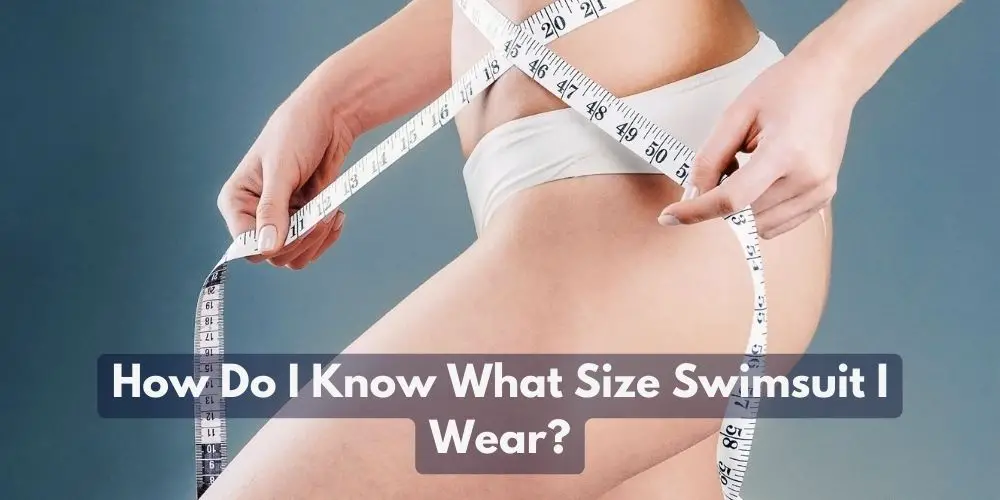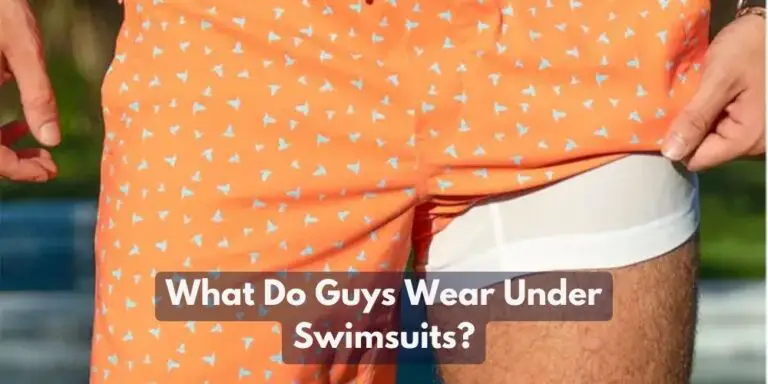
When it comes to swimsuit shopping, finding the right size can be a daunting task. With so many different styles, cuts, and brands available, it’s easy to get overwhelmed.
However, with a few simple steps and helpful tips, you can quickly determine the perfect swimsuit size for your body.
This comprehensive guide will walk you through finding your ideal swimsuit size, ensuring you feel confident and comfortable on the beach or by the pool.
How Do I Know What Size Swimsuit I Wear?

To determine the correct size swimsuit for yourself, you can follow these general steps:
Determining your swimsuit size is easier than you might think. You can ensure a perfect fit that flatters your body shape by following a few simple steps. Here’s a breakdown of the process:
1. Take Accurate Measurements
Before shopping for a swimsuit, it’s crucial to measure yourself correctly. Grab a measuring tape and follow these steps:
- Bust: Wrap the measuring tape around the fullest part of your bust, ensuring it’s parallel to the ground.
- Waist: Measure the narrowest part of your waist, usually a few inches above your belly button.
- Hips: Wrap the tape around the fullest part of your hips, including your buttocks.
2. Find Your Size on the Size Chart
Once you have your measurements, compare them to the size chart of the swimwear brand you’re interested in.
Most brands have their own size charts, so referring to the specific one is essential for accurate results. Match your measurements to the corresponding size to determine your swimsuit size.
3. Consider Body Shape
While the size chart provides a starting point, it’s also essential to consider your body shape. Different styles of swimsuits are designed to flatter different body types. Here are some general guidelines:
- Hourglass: If you have an hourglass figure with a well-defined waist, opt for swimsuits that emphasize your curves, such as high-waisted bottoms and belted one-pieces.
- Pear: If you have a pear-shaped body with wider hips and a smaller bust, go for bottoms with more coverage and tops with detailing or patterns to draw attention upward.
- Apple: If you have an apple-shaped body with a fuller midsection, look for swimsuits that provide tummy control and ruching to create a more defined waistline.
- Athletic: If you have an athletic figure with a straighter shape, you can experiment with various styles. Consider bikinis with ruffles or embellishments to add curves.
4. Read Customer Reviews
Customer reviews can be a valuable resource when determining the fit of a swimsuit. Look for reviews from people with similar body types and read about their experiences.
This can give you insights into whether a particular swimsuit runs true to size or if you should size up or down.
5. Try It On
Once you’ve researched and decided, it’s time to try on the swimsuit. Take note of how it fits and feels on your body. Remember, comfort is just as important as style! Move around, sit down, and even simulate beach activities to ensure the swimsuit stays in place and provides the desired coverage and support.
Should swimsuits be tight or loose?
When it comes to the fit of swimsuits, the ideal balance is a snug fit without being too tight or loose. Here’s why:
- Tight Swimsuits: Excessively tight Swimsuits can be uncomfortable and restrict movement. They may dig into your skin, causing discomfort and leaving marks. Additionally, overly tight swimsuits can create bulges or emphasize areas you may not want to draw attention to. Finding a swimsuit that fits snugly but doesn’t feel constricting is essential.
- Loose Swimsuits: Conversely, too loose swimsuits can pose their problems. Open swimwear may shift and move around, potentially leading to embarrassing wardrobe malfunctions. It can also lack the necessary support, especially in areas like the bust, which may leave you feeling unsupported and insecure.
The key is finding a swimsuit that fits your body comfortably and offers the proper support and coverage. Remember that different styles may have varying levels of snugness, and personal preferences can also come into play. Some individuals prefer a tighter fit for added support, while others opt for a slightly looser fit for a more relaxed feel.
How do you know if a swimsuit is too small?
A few telltale signs indicate a swimsuit is too small for you. Here are some key indicators to look out for:
1. Digging into the skin
If the swimsuit leaves noticeable marks or digs into your skin, especially around the straps, edges, or seams, it’s a sign that it’s too small. A properly fitting swimsuit should feel comfortable and not leave imprints on your skin.
2. Unwanted bulges
If you notice bulges or spillage in areas like the bust, hips, or waist, it indicates that the swimsuit is too small. Whether ribbed or regular swimsuit, the fabric should smoothly hug your body without creating excess pressure or causing discomfort.
3. Limited range of motion
When trying on a swimsuit, test its flexibility by moving your arms, legs, and torso. If you feel restricted or find it challenging to move freely, it’s likely that the swimsuit is too small. Optimal swimwear should allow you to comfortably engage in activities like swimming, lounging, or playing beach sports.
4. Excessive stretching or distortion
If the fabric of the swimsuit appears stretched or distorted when you put it on, it may indicate that it’s too small. The material should fit smoothly without any visible strain or pulling.
5. Unwanted exposure
A swimsuit that is too small may not provide adequate coverage in certain areas. Check for any gaps, gaps between fabric and skin, or accidental exposure when you move or bend. Properly fitting swimwear should offer the desired level of modesty and security.
Final Words
Finding the right size swimsuit doesn’t have to be a daunting task. If you follow the steps outlined in this article and consider your body shape, you can confidently choose a swimsuit that fits and flatters your unique figure.
Remember to take accurate measurements, refer to the size chart, and read customer reviews for additional insights.
Don’t forget to prioritize comfort and style while trying on different swimsuits. With these tips in mind, you’ll be ready to confidently hit the beach or pool and enjoy your time in the sun.






